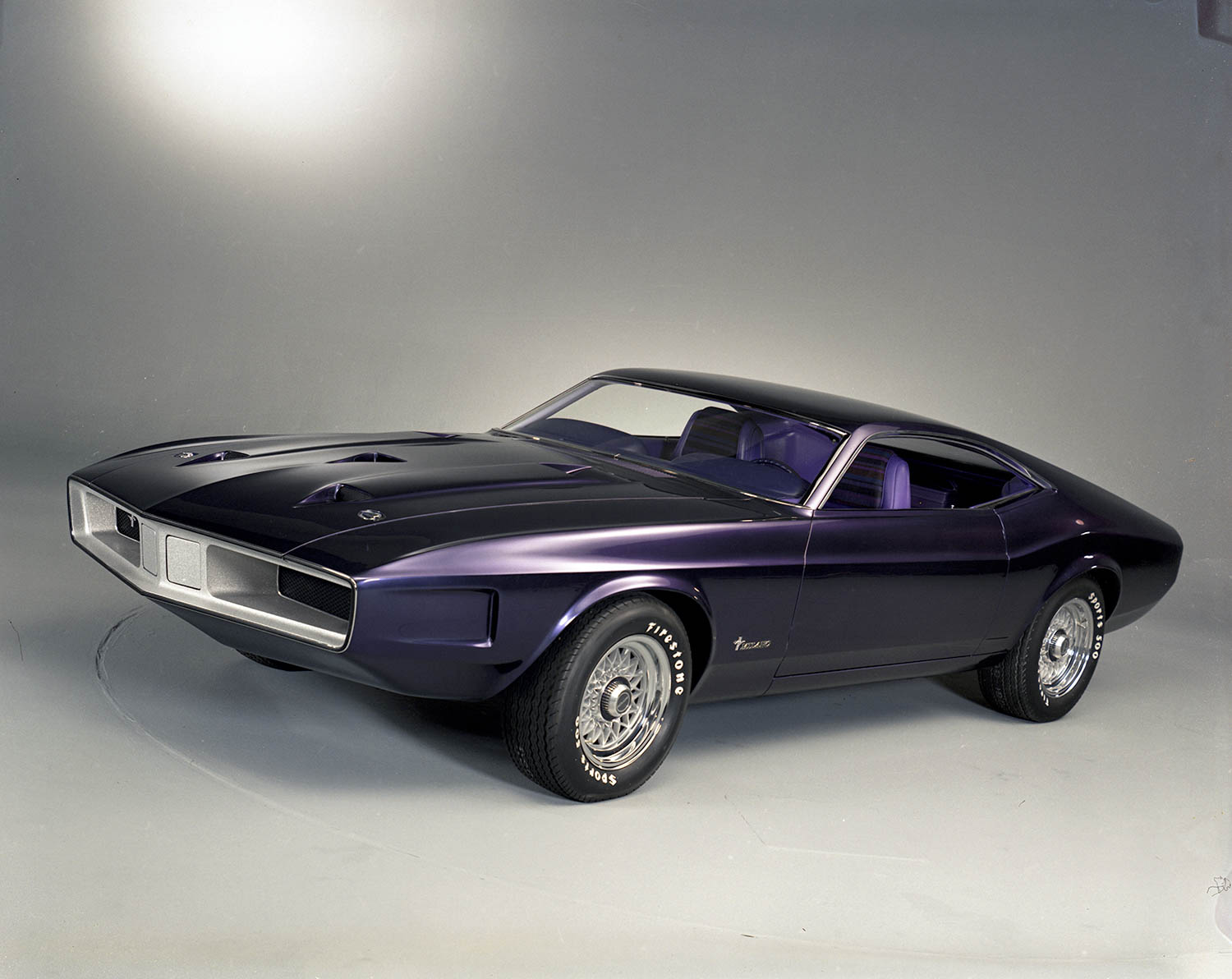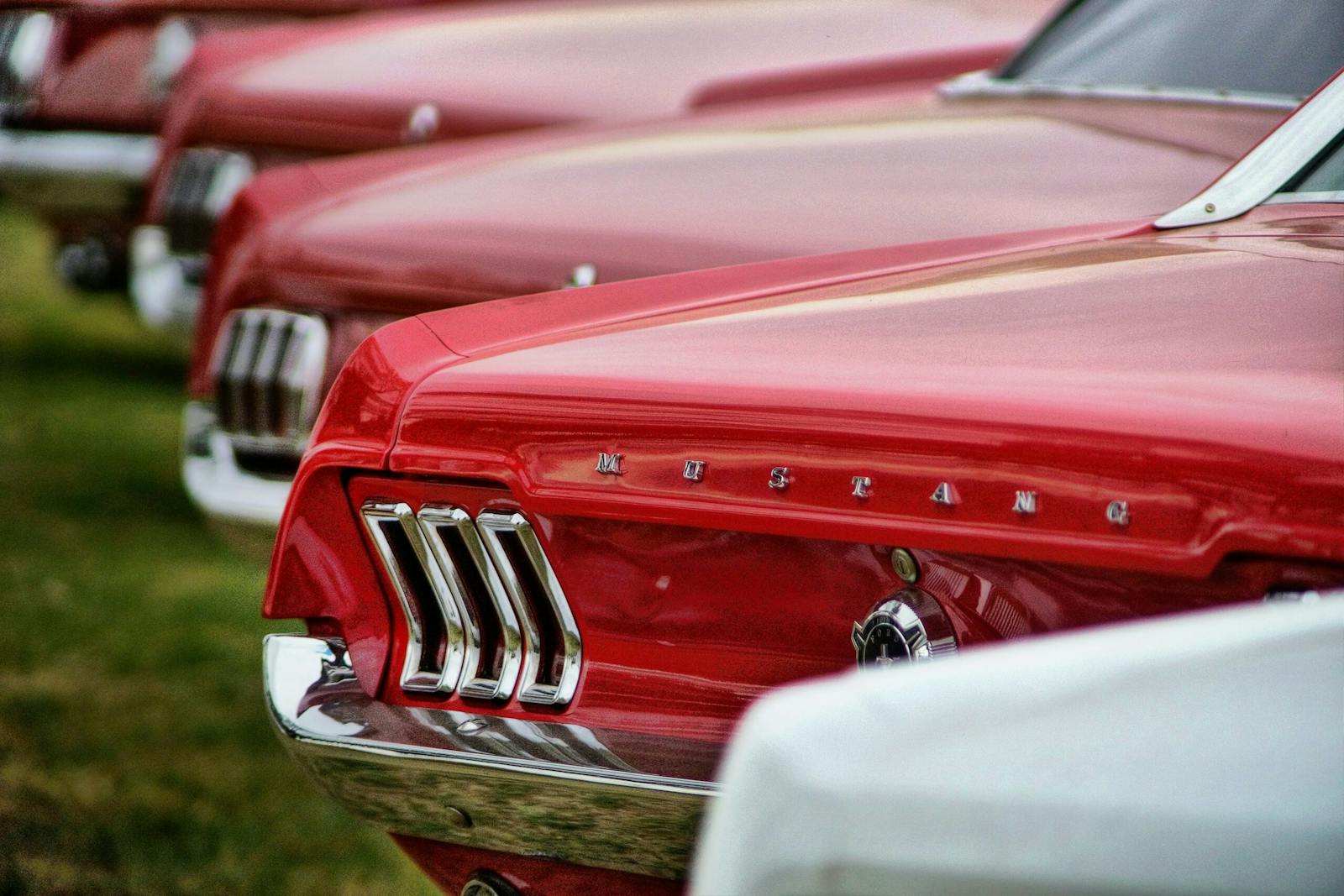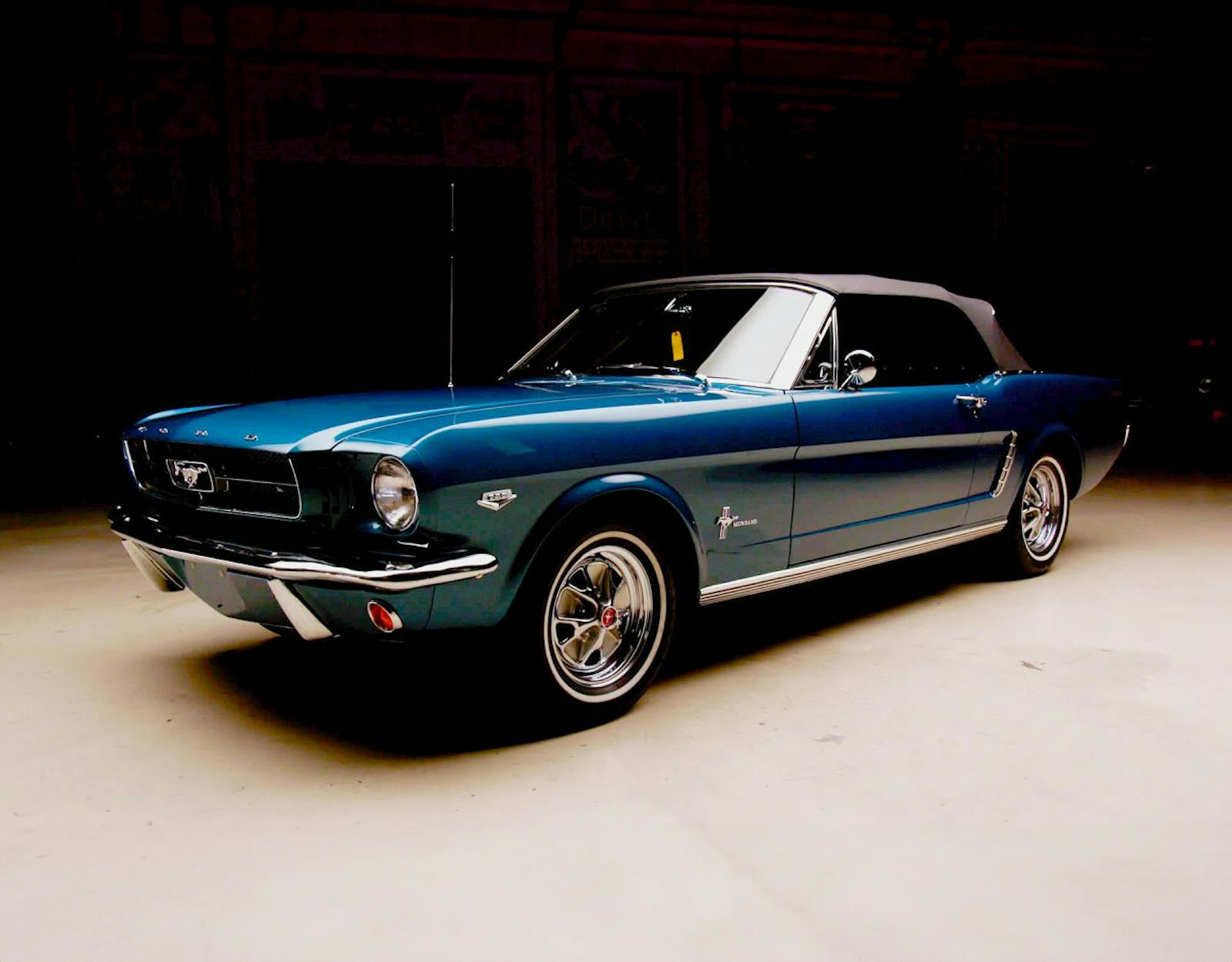17 more Mustang concepts that never came to be
Few cars have changed the automotive industry as much as the Ford Mustang. It gave rise to the pony car class, a segment that never existed. It remains the segment leader today, despite any number of ups and downs in its development.
Given its long history, there were several branches on the Mustang evolutionary tree that never went anywhere. We took a close look at a few of these never-to-be Mustangs in a previous story. This time around, we’ve rounded up even more examples of Ford’s pony that never saw a showroom. Here they are, in chronological order.
1962 Mustang Concept I
The first Mustang was a two-seat, mid-engine sports car with a tubular frame, aluminum skin, and a fully independent suspension. Measuring just 154 inches long, it weighed a mere 1200 pounds. Its 90-horsepower 2.0-liter V-4 engine propelled it to 60 mph in 10 seconds. Ford General Manager Lee Iacocca declared it too radical. Nevertheless, it established the pony car proportion with its long hood, short rear deck, and sculpted flanks.
1962 Avventura Concept

In late 1961, Ford designers began to explore sporty coupe designs using the new Falcon compact platform. This design, dubbed Avventura, was a hatchback with a rear-facing rear seat before being switched to a conventional arrangement. Its name changed as well, becoming the Avanti before being renamed the Allegro.
1962 Allegro Concept

By 1962, Gene Bordinat and his team were working on the Allegro concept, which looked nothing like the production Mustang. However, it was significant since it established the basic proportions, namely a notchback coupe with a long hood, short rear deck, and compact cabin. Ford built 13 versions of the Allegro, most reflecting a European influence. This isn’t surprising given that the rising popularity of cars from the continent was one reason why Ford built the Mustang.
1962 Two-Seat Concepts

The outcry following the death of the two-seat Thunderbird in 1958 led designers to consider a Mustang with two seats. Even when management decided that the Mustang would have a rear seat, Ford designers would turn to the idea of a two-seat Mustang again and again. None made it to production, although two contemporary Mustangs–the Boss 302 Laguna Seca and the upcoming Shelby GT500 with Carbon Fiber Track package–have the rear seats removed.
1963 Mustang I Concept Hardtop
This 1963 sketch shows a hardtop version of the Mustang I Concept that probably inspired the GT40 Mk I that ran at Le Mans in 1964. But the exotic looks most likely killed this car’s chances of reaching production as a Mustang, even if it paved the way for one of the most beautiful race cars of the 1960s.
1964 Two-Seat Mustang
As the Mustang’s final form was coalescing, Ford designers couldn’t help themselves; they had to see how their new design would look without rear seats. The resulting two-seat Mustang clay model from April 23, 1964 looks decidedly odd.
1965 Mustang Sedan
20180417124501)
If Ford had made four-door Mustang from this concept, the idea of a Mustang sedan might not seem like heresy today. But Ford famously gutted the Thunderbird’s mystique by offering it as a sedan, so it’s easy to understand the exploring the idea for America’s beloved pony car. Nevertheless, it doesn’t look as bad as you might expect, even if it is gut-wrenching to behold.
What to call it?
Even as the Mustang’s final design came together, there was indecision over what to call the new car. Many names were considered, including Allegro, Stiletto, and Cougar, as can be seen on the grille of this prototype. The company finally chose Mustang, named for the World War II fighter plane, although Ford pushed pony imagery, rather than the aircraft.
1966 Mustang station wagon
20180417124802)
More the European shooting brake than a traditional American station wagon, Ford designers contemplated offering a station wagon at a time when wagons ruled the hearts and driveways of suburbia. Unlike the two-seat or sedan variants, at least one running prototype was built using 1966 coupe running gear.
1966 Ford Mustang Mach 1 Concept

Looking much like a production Mustang that had been crushed by a falling boulder, the 1966 Ford Mustang Mach 1 Concept was shown at the 1967 Detroit Auto Show with a low-cut roofline. Its fascia and grille look close to the one that reached production.
1966 Ford Mustang Mach 1 Concept (part 2)
The concept was revised a couple of years later with a fresh face. The concept’s hatchback was retained, and would later be used on the 1974 Mustang II, continuing as a Mustang styling hallmark through 1993.
1967 Ford Allegro II Concept

You have to wonder if Ford’s designers ran out of ideas, or if accountants wanted to wring more mileage out of old Mustang concepts. Regardless, in 1967, Ford designers removed the fastback greenhouse from the 1962 Allegro Coupe Concept and replaced it with a speedster-style windshield, a rollbar, a rear flying buttress, and a revised rear end. The result was the Allegro II.
1970 Ford Mach 2 Concept

Looking for a successor to the Shelby Cobra, design chief Gene Bordinat and the Special Vehicles Group considered reviving the Mustang Concept I’s two-seat, mid-engine layout, using a 289-cubic-inch Hi-Po V-8. Despite its exotic form, the Mach 2 Concept preserved the Mustang’s long-hood, short-deck proportions. Given the cost to produce such a vehicle, it was guaranteed to never make it beyond the auto show turntable.
1970 Ford Mustang Milano Concept

While certain elements of the 1970 Ford Mustang Milano Concept made it to 1971 Mustang, such as its pointy proboscis and flat rear decklid, the remainder influenced other Ford models, including the Australian Ford Falcon XB coupe, which was produced in the mid-1970s.
1971 Ford Mustang II Concept
20180417124936)
In 1971, Ghia design studio of Italy, then owned by Ford, prepared this sleek three-door hatchback proposal for what eventually became the Mustang II, although few of the details made production. Still, its styling suggests that Ford was aiming to compete with fuel-efficient Japanese cars such as the Toyota Celica (which, as an example of circular influence, was inspired by the Mustang).
1974 Ford Mustang Sportiva II
The first inkling of what the 1974 Ford Mustang II would look like appeared as the Mustang Sportiva II, a targa-roofed concept built from a modified pre-production 1974 model, which used a Pinto platform. Upon reaching production, the Mustang II would look a lot like the Sportiva, but would offer an optional T-Tops, not a Targa roof.
1980 Ford Mustang RSX Concept
Designed by Ghia the of Italy, this concept recalls the worst excesses of 1980s car design, with styling guided by aerodynamics as much as design. Conceived as a rally car, it employed the third-generation Mustang platform that debuted in 1979, but had a shorter wheelbase, wider track and higher ride height suitable for off-road adventures—or for finding a more suitable clothing store.


